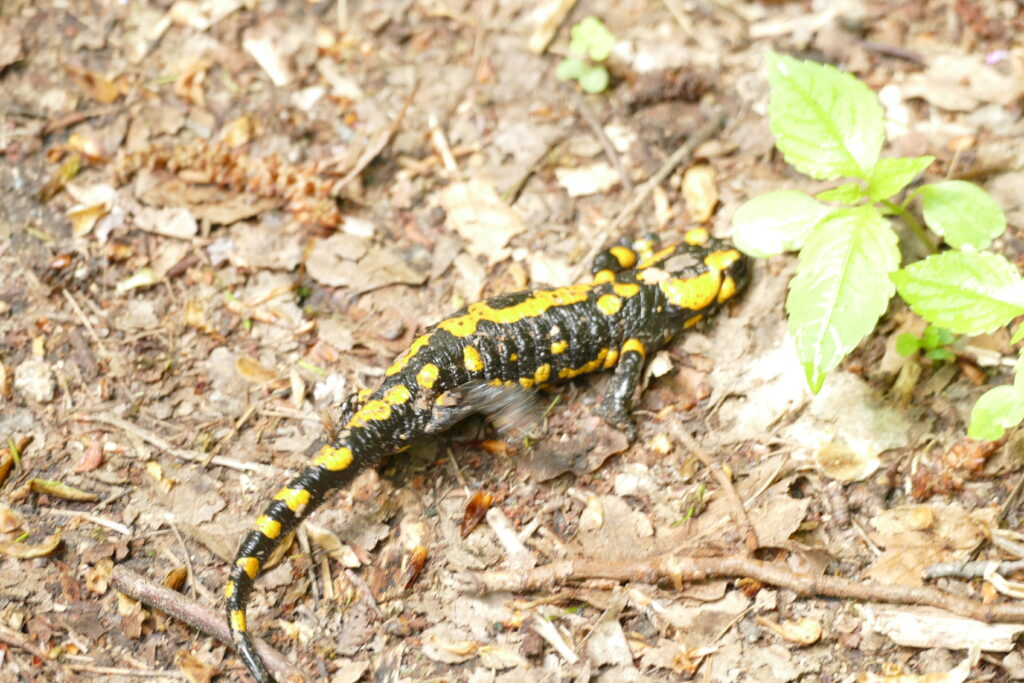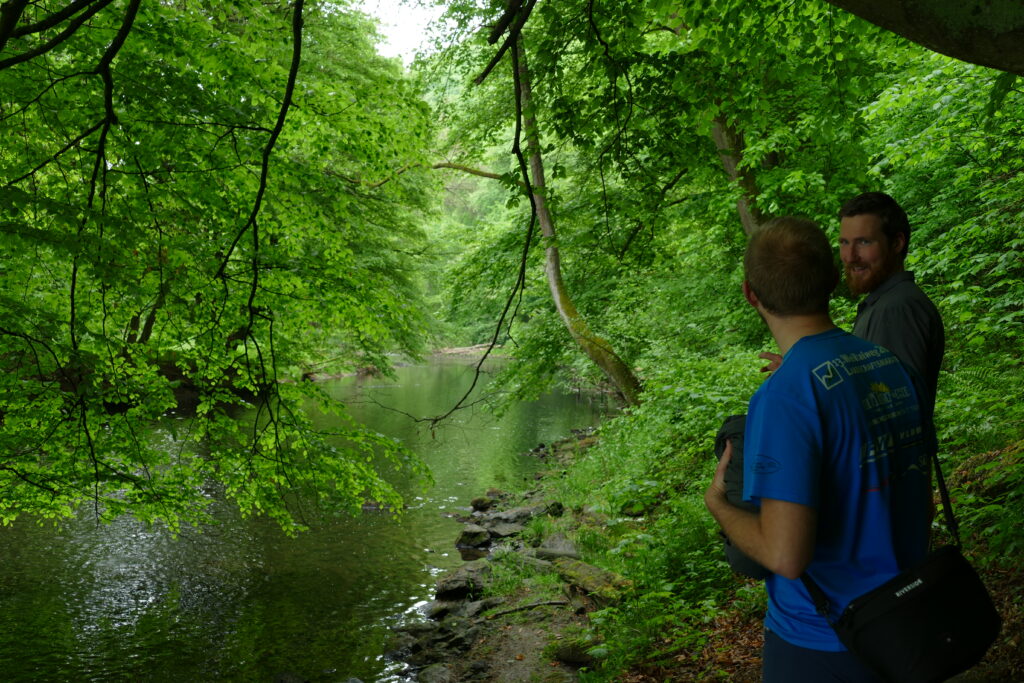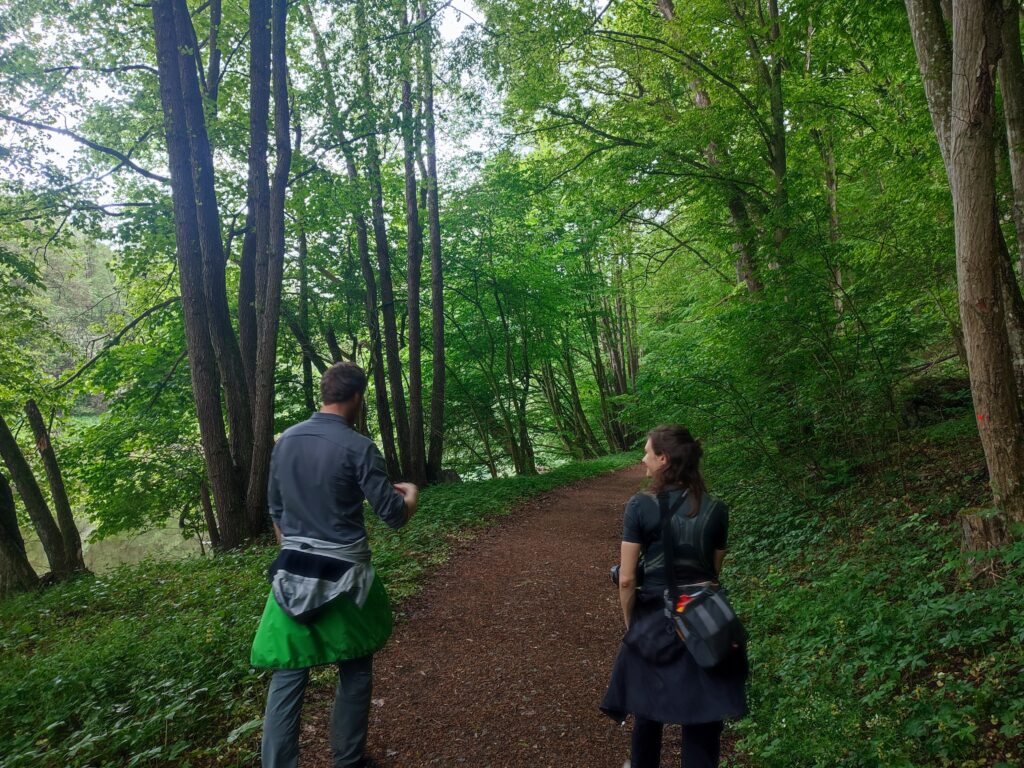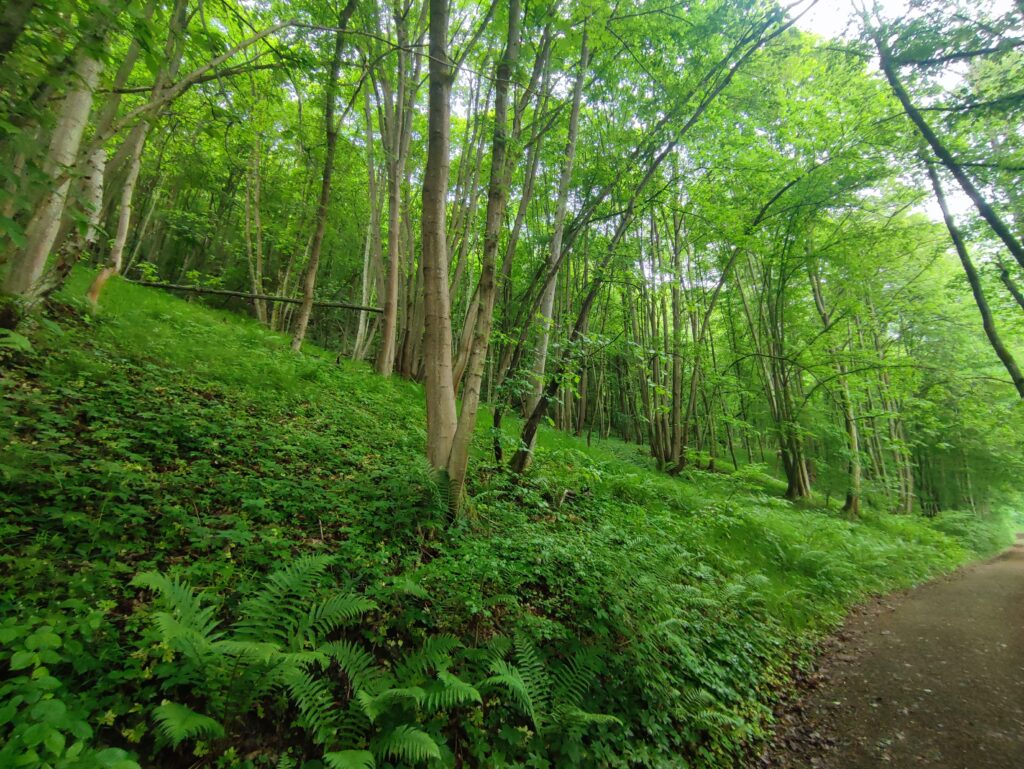We already told you about our stay at the Dyje / Thaya river on the Czech-Austrian border. We came here to visit the twin national parks Podyji on the Czech side of the river and Thayatal on the Austrian side. In Podyji, we met Zdenek, the zoologist of the national park. He showed us several unique and biodiverse habitats, some of which barely exist in the Czech Republic outside of Podyji. After that, he even invited us to spend the night at his home and welcomed us with great hospitality.
The next morning, we set off early for a short 10 km ride, which brought us to the other side of the river, another country and another national park. We stop at the historically important Thaya bridge that connects Cizov with Hardegg. Here, we meet David Freudl, deputy director of Thayatal National Park.
The smallest city in Austria
He tells us about the interesting history of this place. It has been a border for centuries and its history is just as moving and emotional as the history of Czech-Austrian relations. The imposing Hardegg castle towering on a rock above the river is a witness of the former glory and importance of this city starting in the 10th century. However, when you walk through the city, its decline since the second world war becomes quite obvious. Its whole identity and fortune were based on the location at the border of Lower Austria and Moravia facilitating trade and movement between the regions. When the Iron Curtain took shape, Hardegg was robbed of this role and turned into a city trapped between deadly border fortifications and steep slopes that separating it from all neighbouring settlements. This left Hardegg with only 80 inhabitants nowadays.
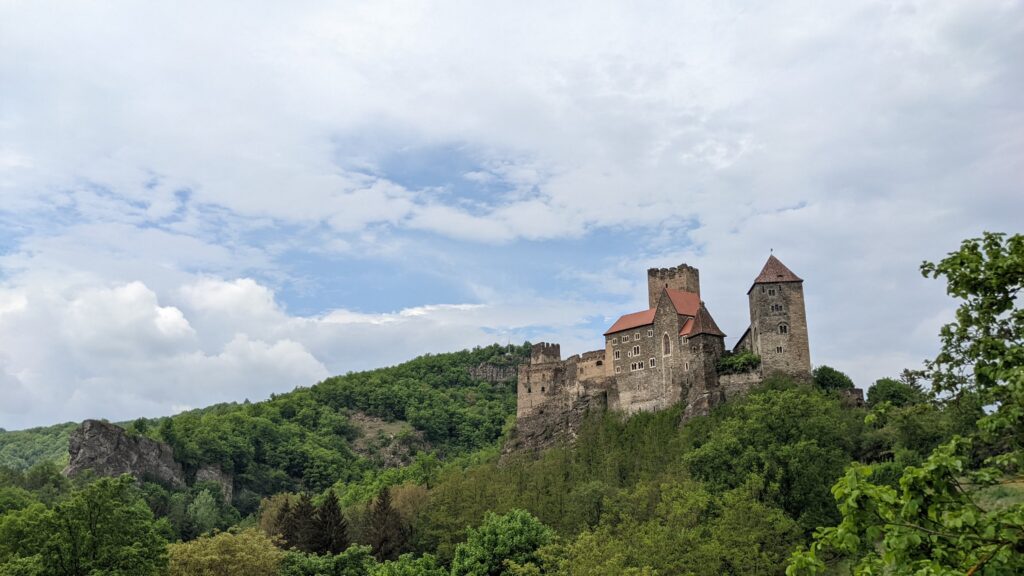
In fact, the very bridge we meet on was dismantled during the cold war and restored after the Iron Curtain fell. A little exhibition shows the enthusiasm that people felt finally being able to visit their Czech brothers and sisters again. Around this time, Podyji National Park was also established covering many of the former military no-go zones. And from the start, the Czech authorities made clear that the Austrian part of the Thaya valley should also be protected.
Austria’s smallest national park
It took almost ten years until this took shape and Thayatal National Park was inaugurated in 2000. The Austrian authorities chose another approach than Podyji though. Where Podyji National Park is around 63 km² large plus a buffer zone of 29 km², Thayatal is only 13 km² big and has no buffer zone. It does only include forests directly in and around the valley and does not have a big influence on what happens outside of them.
Inside of its boundaries though, it got a much stronger mandate than Podyji. When the national park was established, all non-native forests were cleared and left to natural regeneration. From there on, the national park was given 30 years to shape a natural environment. After that, no more management is allowed.
Starting from the bridge, David takes us on a walk through Thayatal. We start on a hiking trail along the river and he explains to us his interpretation of the national park´s mission.
“National Parks should protect natural processes, not actively conserve the status quo.”
David Freudl, Deputy director of Thayatal National Park
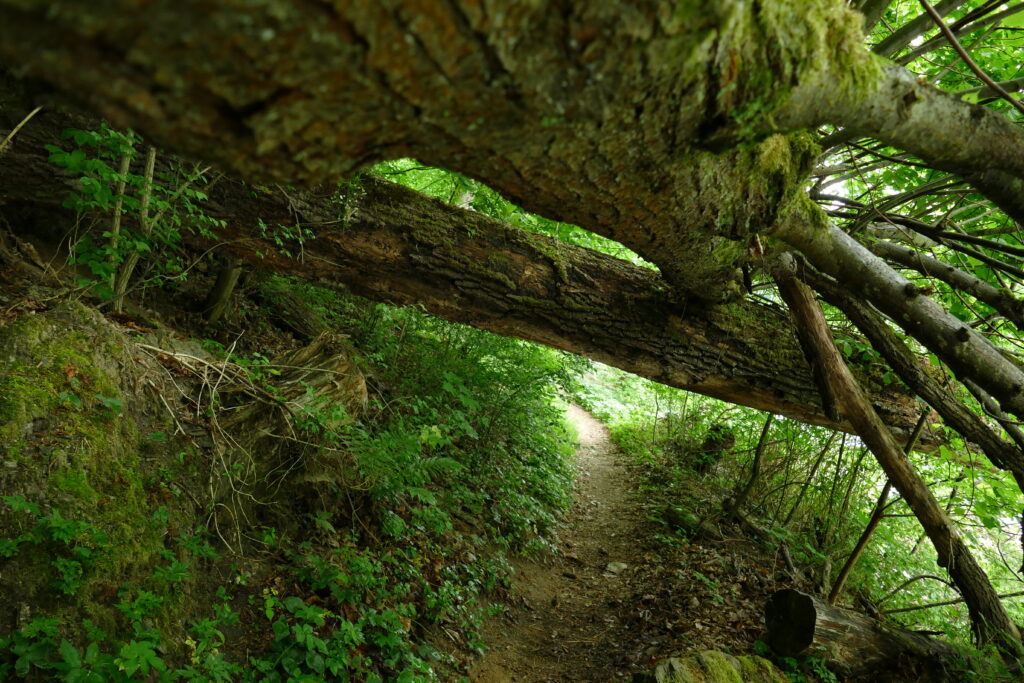
A wild walk in Thayatal
All across the park, we can see the embrace of wilderness. Dead trees are lying crisscrossed in the forest and on the river banks, hiking paths are small trails meandering through obstacles and areas off the trails are hardly accessible. 91% of the national park is in a so-called nature zone meaning there is no management at all. Some of it are old-growth oak and beech forests, in other parts it is visible that large forest areas have been cut down 20 years ago. Here, you see young forest in a growing stage with dense young trees fighting for light.
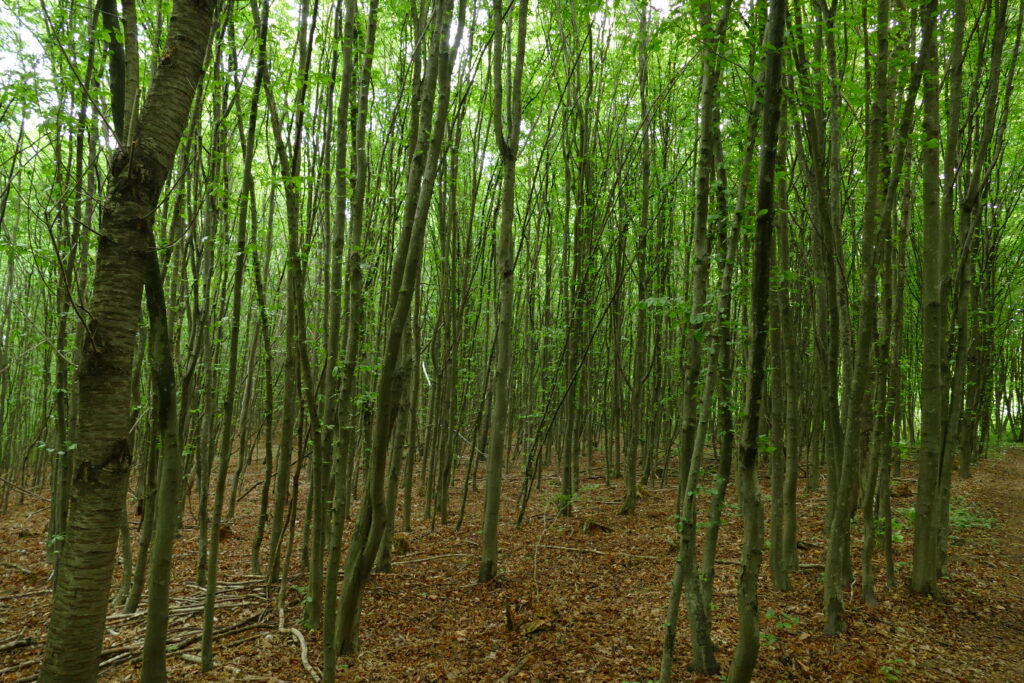
In the park, you can really see the different stages of wilderness. Most people associate primeval forests or untouched landscapes with the term wilderness, but its main character is that natural processes have the chance to take place without interference from humans. Primeval or at least long untouched areas are surely the most valuable wilderness, but every stage of an ecosystem can be wild and the key is its development, not its current state.
The national park and its staff have adopted this approach. David proudly tells us that they actually won´t need 30 years to shape the forests, but that they are pretty much done now and will leave the forest to itself. This is a shared success by the whole team and only possible thanks to support from political decision makers.
Diverse meadows complete the picture
The park is completed by actively mowed meadows along the river that create a network of habitats in connection with meadows in Podyji on the other side of the river. They are home to a plethora of rare plants, small vertebrates and insects. When we walk past them, David gives us an insight into the everyday work of a manager of a protected area. The flora and fauna is monitored by a group of specialists for different species – for example a specialist for butterflies and another for spiders. Both animal groups depend on the meadows for their survival, but for one group it might be better to mow the grass in June, for the other to wait until July.
So what do you do, how do you decide when to mow? There is no right or wrong answer to this. You can alternate year by year / meadow by meadow or you try to find a compromise between both groups. But of course there are also many other factors to take into account, e.g. flowering plants or nesting animals.
Diverse cooperation
After three hours, we reached the end of our tour. We have walked on small trails through wild forests up and down the Thaya valley, passed diverse meadows on the river banks and climbed up to the top of the valley to get a sweeping view over the Thaya. It was more than interesting to hear about the history of the Thaya valley, Hardegg and the national park. David clearly is a lover of wilderness and impersonates the goal of the national park.
Visiting both national parks here has shown how diverse nature conservation can be even in two organisations that seem so similar at first glance. And it has shown us that different philosophies and perspectives must not stand in the way of cooperation. Nature does not know borders and it does not care about about our sensitivities. It will occupy any space and niche that we provide for it. Similarly, Thayatal and Podyji work together where possible while occupying their own niches.


